Strength Training for Women: Build Functional Strength & Confident Posture
Strength training for women has been misunderstood for far too long, buried under myths about becoming “too bulky” or fears of injury that simply don’t reflect reality. The truth is that women who engage in regular strength work develop remarkable resilience—stronger bones that resist osteoporosis, upright posture that eliminates chronic back pain, and functional capabilities that make daily life effortless rather than exhausting. Your body possesses extraordinary potential for transformation regardless of your current fitness level, and the barriers that once prevented women from accessing this power—restrictive clothing, cultural limitations, misguided advice—no longer need to hold you back.
This comprehensive guide reveals why strength training delivers benefits no other exercise form can match, introduces you to exercises to improve posture for women that require no equipment, and provides a complete roadmap for building women’s functional strength safely and progressively. You’ll discover the surprising connection between breathing and structural integrity, learn exactly how to perform six foundational movements with proper form, and receive a practical daily routine requiring just 15 minutes that produces measurable results within weeks.
Why Strength Training for Women Matters More Than Ever
Women’s bodies respond exceptionally well to strength training, yet cultural narratives have historically discouraged this form of exercise. The reality revealed by modern research is that functional fitness supports bone health, muscle tone, and joint stability—all critical for preventing osteoporosis, arthritis, and age-related conditions. When you build strength systematically, you’re not just changing how your muscles look; you’re fundamentally altering how your skeletal system functions, how your nervous system coordinates movement, and how confidently you navigate physical challenges.
Posture stands as one of the most visible yet overlooked benefits of strength training for women. Poor posture doesn’t merely look unappealing—it actively damages your health by restricting breathing capacity, compressing internal organs, and creating chronic muscle tension that manifests as headaches, back pain, and fatigue. Women who develop core and back strength through targeted exercises experience dramatic posture improvements that reverse years of slouching and forward head position. The muscular support you build through training allows your spine to maintain its natural curves rather than collapsing under gravity’s constant pull.
Bone density represents another crucial consideration, particularly for women approaching or beyond menopause. Strength training provides the mechanical stress that signals bones to maintain and even increase density, offering protection against fractures that can devastate quality of life in later years. Unlike walking or swimming, which provide excellent cardiovascular benefits, resistance exercises create the specific loading patterns bones need to stay strong. This preventive investment in your skeletal health pays dividends for decades, maintaining the independence and capability that define successful aging.
Breaking Through Historical Barriers to Women’s Functional Strength
Understanding the obstacles that have traditionally prevented women from developing strength helps explain why so many feel intimidated by strength training today. Historical restrictions—tight corsets that prevented deep breathing and core engagement, shoes designed for appearance rather than function, cultural messaging that equated physical weakness with femininity—created generations of women disconnected from their bodies’ true capabilities. These barriers weren’t biological necessities but social constructions that actively harmed women’s health.
The corset provides the most striking example of how clothing choices undermined women’s functional strength. By “supporting” the torso externally, corsets prevented the core muscles from developing the strength to support the spine independently. This created a self-fulfilling prophecy where women believed they needed external support because their muscles had atrophied from disuse. Modern equivalents exist today—excessively cushioned shoes that prevent foot muscles from strengthening, chairs designed to “support” backs that should be supporting themselves, and fitness approaches that emphasize appearance over capability.
Breaking free from these limitations requires recognizing that your body gains strength through use, not through external support systems. When you begin exercises to improve posture for women, you’re teaching muscles that may have been dormant for years to activate and coordinate properly. Initial weakness doesn’t reflect permanent limitation—it simply shows your starting point. Understanding proper movement mechanics and maintaining joint mobility create the foundation upon which strength builds progressively and safely, allowing you to reclaim physical capabilities you may have thought lost forever.
6 Beginner-Friendly Exercises to Improve Posture for Women
Building women’s functional strength begins with movements that teach your body to organize itself properly in space. These six exercises require no equipment yet provide comprehensive training for the muscular systems governing posture, core stability, and everyday function. Perform them with careful attention to form rather than rushing through repetitions, as quality of movement determines results.
1. Wall Stand Posture Reset: Stand with your back against a wall, positioning your head, shoulder blades, and buttocks in contact with the surface. Your heels should be 2-3 inches from the wall ir touching the floor. Slide your arms up the wall overhead while maintaining all contact points, then return them to your sides. This exercise teaches your nervous system what correct alignment feels like and strengthens the muscles that maintain it. Perform 10-15 repetitions, holding the top position for 2 seconds. This foundational movement for strength training for women establishes the postural baseline all other exercises build upon.
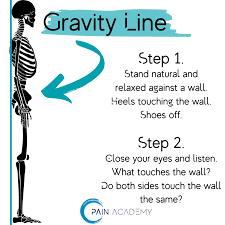
2. Controlled Hip Hinge: Stand with feet hip-width apart, hands on hips. Keeping your spine neutral and chest lifted, push your hips backward as if reaching for a chair behind you. Your weight should shift toward your heels, and you should feel tension in your hamstrings and glutes rather than your lower back. Return to standing by driving through your heels and squeezing your glutes. This fundamental pattern protects your spine during bending and lifting activities while building posterior chain strength essential for upright posture. Begin with 8-10 repetitions, progressing to 15-20 as the movement becomes natural.

3. Quadruped Shoulder Taps: Position yourself on hands and knees with hands under shoulders and knees under hips. Engage your core to prevent your lower back from sagging. Lift your right hand and tap your left shoulder, maintaining level hips and stable torso throughout. Return hand to floor and repeat on opposite side. This exercise develops anti-rotational core strength that stabilizes your spine during asymmetric activities like carrying bags or reaching across your body. Alternate sides for 16-20 total taps (8-10 per side), focusing on minimal hip movement rather than speed.
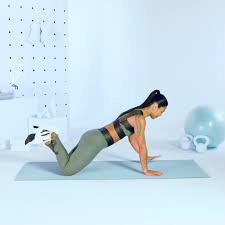
4. Glute Bridge with Hold: Lie on your back with knees bent and feet flat, positioned hip-width apart. Press through your heels to lift your hips until your body forms a straight line from shoulders to knees. Squeeze your glutes at the top and hold for 3-5 seconds before lowering with control. This exercise activates often-dormant glute muscles while teaching hip extension—the movement pattern that counteracts the hip flexor tightness created by prolonged sitting. The glute activation developed here directly supports upright posture by preventing anterior pelvic tilt. Perform 12-15 repetitions with full holds, resting 30 seconds between sets if needed.
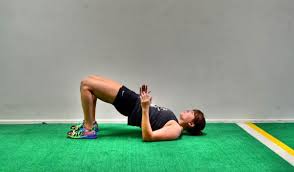
5. Shoulder Blade Squeeze: Sit or stand with arms at your sides. Pull your shoulder blades back and down, as if trying to squeeze a pencil between them. Hold this position for 5 seconds while breathing normally, then release. This simple movement strengthens the muscles between your shoulder blades that prevent forward shoulder rolling and the rounded upper back that characterizes poor desk posture. Perform 10-12 repetitions, gradually increasing hold time to 10 seconds as strength develops. This exercise for women’s functional strength can be practiced multiple times daily, even while seated at work.

6. Modified Plank Progression: Begin on hands and knees (tabletop position). Extend one leg behind you until it’s straight, maintaining level hips and engaged core. Hold for 10-20 seconds, then switch legs. As strength develops, progress to extending opposite arm and leg simultaneously, then eventually to full plank position on hands and toes. The plank family of exercises builds foundational core strength that supports all other movements while teaching full-body tension and stability. Focus on quality position rather than duration—10 seconds of perfect form outweighs 60 seconds of compromised alignment.
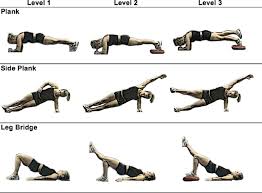
How Core Strength Transforms Women’s Posture Beyond Aesthetics
The relationship between core strength and posture extends far deeper than achieving visible abdominal muscles. Your core functions as the central link connecting upper and lower body, transmitting forces between your limbs while protecting your spine from dangerous loading patterns. When core muscles work properly during strength training for women, they create a stable platform from which your arms and legs can move efficiently without compromising spinal position.
Many women make the mistake of equating core training with endless crunches or sit-ups, movements that actually reinforce the forward-flexed posture created by modern sedentary life. Effective core training emphasizes anti-movement—resisting unwanted motion rather than creating it. The exercises described above develop this functional core capacity by challenging your torso to maintain stable positions while other body parts move. This translates directly to real-world situations where you need to maintain upright posture while carrying groceries, lifting children, or performing work tasks.
The connection between breathing and core function represents another crucial element most fitness approaches overlook. Your diaphragm—the primary breathing muscle—attaches to your spine and works in coordination with deep core muscles to create intra-abdominal pressure that stabilizes your spine. Shallow chest breathing, often developed by women who have worn restrictive clothing or adopted protective postures, prevents proper diaphragm function and compromises core stability. Learning to breathe deeply into your belly while maintaining core engagement creates the internal pressure system that supports your spine far more effectively than any external brace or support could. Learn more from our blog on deep breathing benefits and how to conduct them at home.
Breathing Drills That Restore Natural Movement Patterns
Proper breathing serves as the foundation for all exercises to improve posture for women, yet it’s the aspect of training most commonly neglected. Years of restricted breathing patterns—whether from tight clothing, chronic stress, or habitual chest breathing—create shallow respiratory patterns that undermine both performance and posture. Restoring diaphragmatic breathing reconnects you with your body’s natural movement rhythms while enhancing core stability.
Diaphragmatic Breathing Practice: Lie on your back with knees bent and one hand on your chest, the other on your belly. Breathe in slowly through your nose, directing the breath to expand your belly rather than lifting your chest. Your lower hand should rise significantly while your upper hand remains relatively still. Exhale slowly through pursed lips, feeling your belly deflate. Practice for 5 minutes daily until this pattern becomes automatic. This fundamental skill enhances oxygen delivery while activating deep core stabilizers that support upright posture throughout all activities.
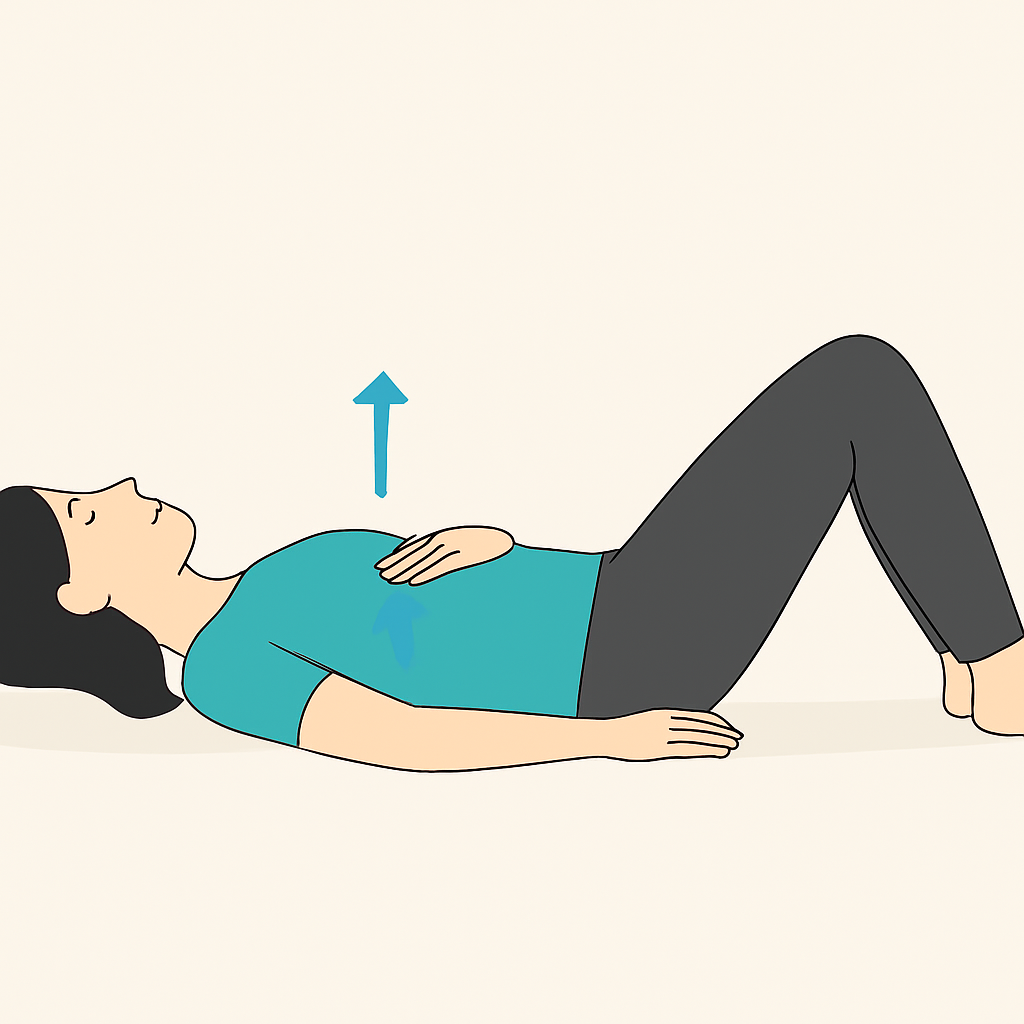
Breath-Coordinated Reaching: Stand in good posture and inhale deeply as you raise both arms overhead, expanding your ribcage fully. Hold briefly at the top, then exhale completely as you lower your arms. This combines breathing practice with shoulder mobility and thoracic extension—the movements that counteract rounded upper back posture. The reaching component addresses the restriction many women experience from years of limited overhead movement. Perform 8-10 repetitions, focusing on full expansion without forcing or straining. This helps with posture, which is essential for reducing back and neck pain while building women’s functional strength in often-neglected movement patterns.
Lateral Breathing Expansion: Place your hands on the sides of your ribcage. As you inhale, focus on expanding your ribs outward against your hands rather than lifting your shoulders or pushing your belly forward. This three-dimensional breathing pattern increases lung capacity while strengthening the intercostal muscles between your ribs. These muscles contribute to thoracic stability and the ability to maintain upright posture even under load. Practice for 3-5 minutes, gradually increasing the expansion you can achieve. This breathing pattern should eventually transfer to all strength exercises, providing continuous core support throughout movement.
Your Progressive 15-Minute Daily Strength Routine
Consistency trumps intensity when building lasting strength and postural improvements. This efficient routine provides comprehensive training in minimal time, making it sustainable within even the busiest schedules. Perform this sequence 5-6 days weekly, allowing your body one or two rest days for recovery and adaptation.
Weeks 1-2 (Foundation Phase): Begin each session with 2 minutes of diaphragmatic breathing practice while lying down. Progress through each exercise: Wall Stand (10 reps), Hip Hinge (8 reps), Shoulder Taps (12 total), Glute Bridge (10 reps), Shoulder Blade Squeeze (8 reps), Modified Plank (one leg extended, 15 seconds each side). Complete this circuit twice with 60 seconds rest between circuits. Focus entirely on movement quality and breathing coordination rather than speed or difficulty. This phase establishes neuromuscular patterns and baseline conditioning.
Weeks 3-4 (Building Phase): Maintain the 2-minute breathing warm-up. Increase repetitions: Wall Stand (15 reps), Hip Hinge (12 reps), Shoulder Taps (16 total), Glute Bridge (15 reps with 5-second holds), Shoulder Blade Squeeze (12 reps), Modified Plank (opposite arm and leg extended, 20 seconds). Complete three circuits with 45 seconds rest between. Add a finishing exercise: 10 slow walking steps with exaggerated proper form, focusing on heel-to-toe roll and upright posture. You should feel muscles working but never experience pain or excessive fatigue.
Weeks 5+ (Progressive Phase): Continue evolving the routine by adding time under tension, decreasing rest periods, or progressing to more challenging variations. The Wall Stand can progress to wall slides with resistance bands. Hip Hinges can evolve toward single-leg variations. Glute Bridges can advance to single-leg versions. Modified Planks progress to full planks on hands and toes. The key principle: increase challenge only when current difficulty feels manageable with perfect form.
Research confirms that progressive resistance training produces significant improvements in muscle strength, bone density, and functional capacity in women across all age groups. Your body will continue adapting for months and years as long as you progressively challenge it within safe parameters.
How to Progress Safely: When to Increase Challenge
Understanding progression principles prevents both stagnation from insufficient challenge and injury from excessive advancement. Strength training for women should follow the principle of gradual overload—systematically increasing demands on your body at a pace that allows adaptation without overwhelming recovery capacity.
Signals You’re Ready to Progress: You can complete all prescribed repetitions with excellent form throughout each set. The final few repetitions feel challenging but achievable without form breakdown. You recover fully between training sessions without lingering soreness lasting more than 48 hours. Your resting heart rate during exercise decreases compared to when you started. These indicators suggest your body has adapted to current demands and will benefit from increased challenge.
Progression Methods for Women’s Functional Strength: Increase repetitions before adding complexity—master 20 perfect repetitions before attempting more difficult variations. Add isometric holds at the most challenging position (top of glute bridge, bottom of hip hinge, etc.). Slow down tempo, particularly the lowering/eccentric phase of movements, which builds strength more effectively than the lifting phase. Progress to single-limb variations that challenge balance and stability alongside strength. Only after exhausting these progressions should you consider adding external resistance through bands, household objects, or gym weights.
Signs You’ve Progressed Too Quickly: Your form deteriorates mid-set or across training sessions. Fatigue or soreness persists for 72+ hours after training. You experience joint pain rather than muscle fatigue during or after exercise. Your motivation to train decreases due to excessive difficulty. These signals indicate you’ve exceeded your current recovery capacity and should reduce training intensity temporarily. Strength building requires patience—progress that feels gradual but sustainable always outperforms aggressive advancement followed by injury or burnout.
Conclusion: Reclaiming Your Physical Power Through Consistent Practice
Strength training for women represents far more than another fitness trend—it’s the reclamation of physical capabilities that cultural restrictions have long suppressed. Your body possesses remarkable capacity for transformation regardless of your starting point, previous training history, or current age. The exercises and principles outlined here provide everything necessary to build functional strength that enhances daily life, corrects postural dysfunction, protects bone health, and restores the confident physical presence that comes from knowing your body can meet whatever challenges arise.
The journey from feeling weak or restricted to experiencing genuine physical competence happens through consistent, progressive practice rather than dramatic breakthroughs. Each training session represents an investment in your long-term wellbeing and independence. The 15 minutes you dedicate to these exercises daily compounds over weeks and months into strength, posture, and capabilities you’ll carry for the rest of your life. Start today with whatever you can manage—even a single exercise performed with attention and care moves you forward. Your future self, standing taller and moving with confidence through a body that feels capable rather than limited, will be grateful you began when you did.
Frequently Asked Questions About Strength Training for Women
Will strength training make me bulky or overly muscular?
No, strength training for women does not create bulky muscles without deliberate effort toward that specific goal. Women naturally have significantly lower testosterone levels than men, making it physiologically difficult to build large muscle mass without extremely high training volumes, specialized nutrition, and often years of dedicated work. The exercises described here build lean, functional muscle that improves your body’s shape by creating definition and posture improvements rather than bulk.
You’ll develop strength, endurance, and metabolic benefits long before any concern about excessive muscle size becomes relevant. Most women who train consistently report feeling “toned” and “firm” rather than bulky, with improved body composition from increased muscle tissue replacing fat tissue.
How long before I see posture improvements from these exercises?
Most women notice initial posture improvements within 2-3 weeks of consistent practice as neuromuscular patterns begin changing. Your brain learns new movement habits relatively quickly, allowing you to maintain better alignment when you think about it consciously. Structural changes that make good posture effortless—where correct alignment becomes your default rather than requiring conscious effort—typically develop over 8-12 weeks as muscles strengthen and adapt.
The timeline varies based on your starting point, consistency of practice, and how many hours daily you spend in positions that challenge your posture (sitting, looking at screens, etc.). Complementing your strength routine by improving your daily postural habits accelerates progress significantly. Many women report others commenting on their improved posture before they notice it themselves, as the changes accumulate gradually.
Can I do strength training if I have back pain or joint issues?
Yes, appropriate strength training often helps resolve back pain and joint issues rather than worsening them, though you should always consult healthcare providers about your specific condition before beginning new exercise. Many chronic pain conditions result from muscular weakness and imbalances rather than structural damage, meaning exercises to improve posture for women directly address root causes. Start with the most basic variations, use reduced ranges of motion if needed, and prioritize perfect form over progression speed.
Movements should feel challenging to muscles but never create sharp pain in joints or spine. If certain exercises aggravate existing conditions, modify them or substitute alternatives while continuing with movements that feel beneficial. Building women’s functional strength systematically provides the muscular support that often eliminates pain by properly distributing forces throughout your body rather than overloading vulnerable areas.
